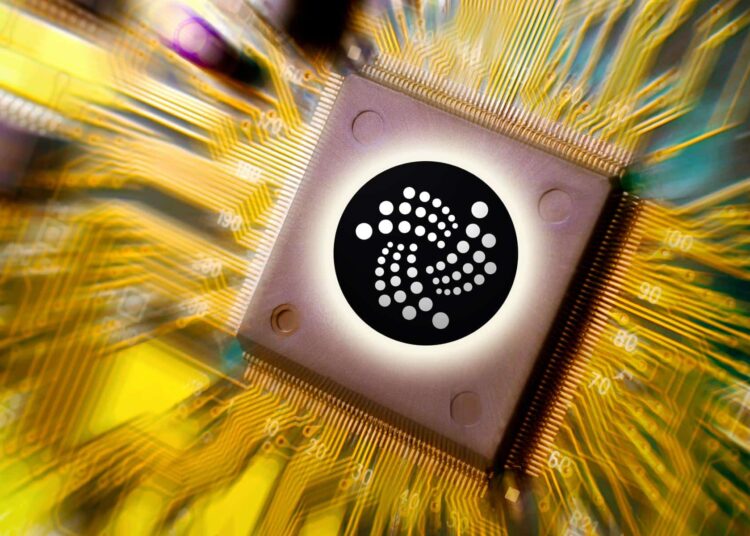- EVM integration allows seamless interaction between IOTA and Ethereum-based applications, developers gain access to a wealth of tools and libraries.
- Alongside the EVM integration, IOTA is bolstering its infrastructure with new services for Oracle providers and global RPC nodes.
The recent integration of the Ethereum Virtual Machine (EVM) into the IOTA ecosystem marks a significant milestone, unleashing a wave of innovation with far-reaching implications.
With EVM integration, IOTA opens doors to seamless collaboration between its platform and Ethereum-based applications, facilitating robust cross-chain communication and interoperability. Moreover, developers now have access to a vast array of tools and libraries from the Ethereum ecosystem, accelerating the development process for decentralized applications (dApps) on the IOTA network.
The integration also introduces smart contract functionality to IOTA, automating and securing transactions and agreements. This addition appeals to developers and users familiar with Ethereum, broadening IOTA’s appeal. By embracing EVM, IOTA aims to attract a broader audience and foster network effects that drive adoption and growth, positioning itself as a leading player in the decentralized application space.
As reported by Crypto News Flash, IOTA’s EVM integration offers developers greater flexibility in dApp development approaches, encouraging innovation and enabling the exploration of unique use cases within the IOTA ecosystem. As the IOTA community embarks on this journey, it invites developers and enthusiasts to collaborate in shaping the future of decentralized applications and driving forward the boundaries of innovation.
Future Outlook With IOTA EVM Integration
The IOTA team has introduced new price pusher services for Oracle providers, aiming to improve the consistency and precision of blockchain updates. Furthermore, global RPC nodes are being rolled out to bolster critical Subgraph Services within the ecosystem.
These advancements play a crucial role in the continuous expansion and efficiency of the IOTA EVM, positioning it for wider adoption and implementation. Further insights into these infrastructure upgrades were provided in a recent tweet by the IOTA team, as reported by Crypto News Flash.
One notable aspect of IOTAevm is its backing for appchains, offering nearly limitless scalability. With @SPYCE_5, these appchains can be swiftly and effortlessly deployed, ensuring smooth incorporation into diverse platforms.
Moreover, assets on Layer 2 (L2), such as NFTs and coins, can seamlessly transition between different layers without the necessity for bridges or third-party mediators, reducing associated risks.
Ethereum vs IOTA
When it comes to underlying technology, Ethereum employs blockchain technology, which involves adding each transaction to a block and connecting them in a chain. Ethereum is recognized for executing DApps through the Ethereum Virtual Machine (EVM).
On the contrary, IOTA utilizes a distinct technology known as Tangle, which is a form of directed acyclic graph (DAG) designed for scalability and efficiency, especially for applications within the Internet of Things (IoT).
In terms of smart contracts, Ethereum’s EVM handles complex smart contracts and is Turing-complete. Conversely, the IOTA EVM endeavors to facilitate Ethereum’s smart contracts, enabling developers to deploy contracts written in Solidity on the IOTA network and Shimmer.
Credit: Source link












































